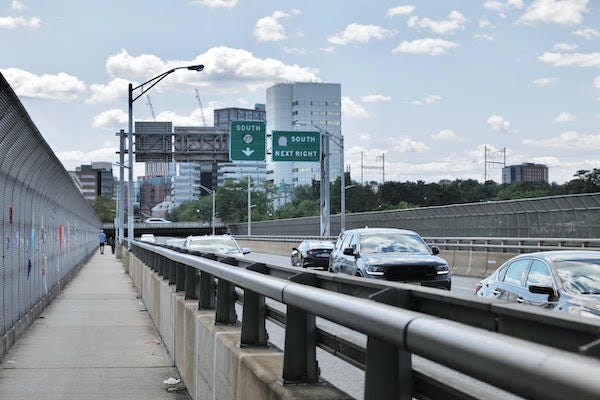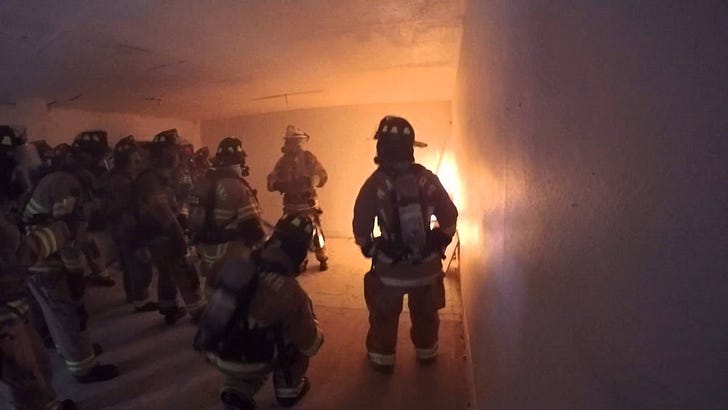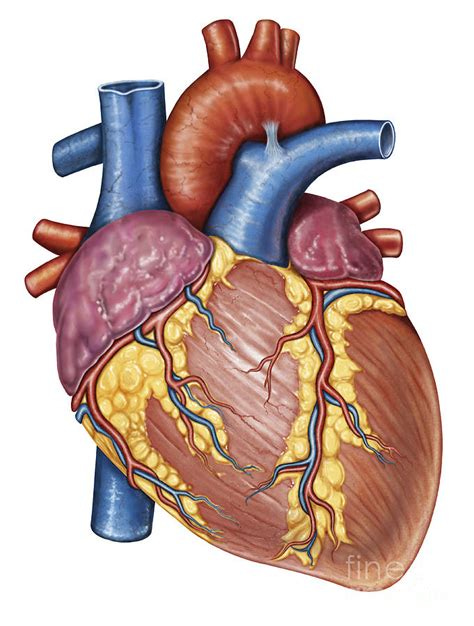Précis
On Tuesday last week I was sent by ambulance from Martha’s Vineyard to Salem Hospital — north of Boston, 3 hours away — with an irregular heartbeat that the good people at Martha’s Vineyard Hospital’s emergency room had been able to calm somewhat, but not regularize. The next day, while sedated, I was given an electric shock with reset my heartbeat to the proper cadence.
When I woke up from the procedure my heartbeat was perfectly regular at an ideal rate and my blood pressure was better than it has been in 40 years. And that’s the way it has remained in the six days since.
Although the health outcome of all this has so far been great, the unscheduled detour into what was for me medical terra incognita disrupted, for a few days, the dignity and repose of my methodical, deliberate — and not at all hurried, stressful or chaotic — march toward lit’ry superstardom with the forthcoming publication of new editions of my four existing novel(la)s, in English and in Spanish, paperback and ebook, along with my new novel Mountain of Devils, (prequel to both Acts of the Apostles and Biodigital, works known to at least some readers of Sundman figures it out!). So it goes. Onward!
This post is about that experience last week — with, of course, some squirrel-brain digressions.
Hot Tuna and Highland Park, New Jersey
From early 2003 through late 2007 I was the only technical writer at Laszlo Systems, a San Francisco-based software startup. There were eight or so employees in the Boston area, including myself, and 40 or so who worked the San Francisco office, which was located in a repurposed garage in an industrial neighborhood near Potrero Hill, not far from the Anchor Steam brewery.
As part of my job I made the trek to the mother ship in California about six time each year to work with the engineers whose code it was my job to explain. I even worked with people who weren’t engineers(!) Sometime around 2006 a new salesman joined the Laszlo team, a soft-spoken guy named Nick Buck.
Laszlo Systems was founded by serial Silicon Valley entrepreneur David Temkin, a smart, intense and funny guy. David was originally from Highland Park, New Jersey. In my essay What’s the frequency, Tom? I wrote about a curious incident that occurred in the summer of 1976, when I resided in Highland Park.
As some attentive readers of this humble gazette will recall, colors may or may not have tried to communicate with me that summer — presumably from some astral plane — on three occasions as I walked along the Albany Street bridge over the Raritan River from Highland Park to New Brunswick.
Recently David found himself back in Highland Park. Remembering my story about New Age mystical woo-woo on the bridge over the Raritan, he took the time to visit that very Albany Street bridge, where he took this photo:

The reason I mention Laszlo software salesman Nick Buck is that before becoming a software salesman Nick had been the keyboard player in the quasi-legendary polymorphous rock/folk ensemble known as Hot Tuna. During one of the many hiatuses in Hot Tuna’s 50+ year life, Nick and bassist Jack Cassidy formed a more hardcore rock group called SVT, short for superventricular tachycardia, which is, according to wikipedia, “an umbrella term for fast heart rhythms arising from the upper part of the heart.”
Superventricular tachycardia was the the condition that sent me to Salem Hospital last week. The first time I ever heard the word ‘tachycardia’ was when Nick told me about his post Hot Tuna band. I remember that because it sounded very scary.
So whenever I hear the word ‘tachycardia’ I think of Nick Buck, which makes me think of Laszlo Systems, and that garage on Mariposa Street in San Francisco. Naturally when I think of Laszlo I sometimes think of my friend David, who founded the company.
Laszlo’s being headquartered in a repurposed garage was, of course, a tech startup cliché. Apple Computer was famously started in a Silicon Valley garage, as was Hewlett-Packard a few decades before Apple. I’ve worked at more than a dozen computer hardware/software startups in my alleged career, and at least three of them were located in repurposed garages. I have many stories from my many long years in startup land. One of those stories involves Laszlo and the Anchor Steam brewery. Maybe I’ll tell you that one one of these days.
Department of Turning Things Off And Turning Them Back On Again
At 8:00 last Tuesday morning I took myself to my doctor’s office at Martha’s Vineyard Hospital for my annual ‘wellness checkup’. During the examination I told the doctor that I had been having some palpitations recently. He took his stethoscope and gave a listen and said, “your heart is beating wildly at about 140 beats per minute. I’m sending you for an EKG.” So I walked down the hall to the EKG department and the nice person there put a bunch of stickers on me and then connected some wires to her machine and pressed a button. She looked at the paper that came out and said, “you’re going to the E.R.” So I was put into a wheelchair and a nice person wheeled me down the hall to the E.R, where I found people waiting for me as if I were the pope or something.
Some more stickers were put on me and a blood pressure cuff was placed around my left arm and an IV was started in my right arm and some medicines were administered. Wires connected the stickers to a machine that went ‘beep-boop’ at an annoying frequency and, even more annoyingly, got louder and louder until someone pressed the pause/reset button. The nice E.R. doctor (a short, handsome slender young guy, dressed in black like Johnny Cash) said, “We have to get your heart rate down. We’re going to try something, and if that doesn’t work we’re going to try something else.”
So they tried the something and that didn’t work so they decided to try the something else. By this time I had been out of the house for an hour an a half and I thought I should call my wife to tell her that I was in the E.R. with a racing heart (atrial flutter and atrial fibrillation, subtypes of superventricular tachycardia) so I might be delayed a bit. But I had left my phone in the car as I often do, because why not. So I borrowed a hospital cell to call Betty but she didn’t pick up because she often ignores calls from numbers she doesn’t recognize.
The way the monitor machine was going ‘beep-boop, beep-boop; Beep-Boop, Beep-Boop; BEEPBOOP BEEPBOOP; BEEPBOOP!! BEEPBOOP!!’ increasingly more insistently reminded me of when you’re geared up and standing around at a fire scene doing nothing and the PASS motion-sensor on your SCBA starts going ‘neener-neener; Neener-Neener; NEENER-NEENER!!, NEENER-NEENER!!!’
But if it’s your SCBA making that annoying sound, all you have to do to reset it wiggle your ass, and that resets the motion sensor. And if it’s the guy next to you whose PASS alert is yelling insistently, you just swat him on the shoulder & say, ‘wiggle your ass!’ and when he does so the annoying NEENER-NEENER shuts up.
But wiggling my ass in the ER did not reset the noisy monitor machine which was very intent on reminding me that I was experiencing superventricular tachycardia, with my heart rate bouncing between 120 and 180 beats per minute. The machine was very insistent about that. YOU’VE GOT TACHYCARDIA! YOUR HEART IS MESSED UP! NEENER NEENER NEENER!!
The next thing they were going to try, the nice E.R. doctor said, was that they were going to give me a medicine that would stop my heart for about ten seconds. And then, in theory, my heart would start beating again, but more reasonably.
You’re going to do what? Stop my heart? Isn’t a stopped hear generally contraindicated, medically speaking?
Yes sure, Dr. Johnny Cash said, but the way we’re going to do it is no big deal.
Uh, OK. I guess?
A nice nurse fetched my phone from my car. Meanwhile I was wheeled into another room in the E.R., this one with a couple of machines on carts. It looked like the setting of one of those TV hospital dramas where all the doctors and nurses hover over some patient squawking instructions and vital stats to each other until somebody calls “Clear!” Meanwhile a senior nurse instructed a junior nurse, “When we say ‘push’, push that plunger as hard as you can. That medicine has to get all the way to the heart to shut it down.”
I called my wife and she picked up and I told her I was in the E.R. I didn’t tell her about the “let’s try turning it off and turning back on again, see if that works” gambit. I figured if I croaked she’d find out soon enough.
I gave my phone to a nurse and turned to the Johnny Cash doctor, and said “let’s do it.” I don’t think anybody picked up on my ironic Gary Gilmore allusion, but I didn’t think it was worth the trouble to explain it.
Family discount
On that Wednesday in November 2016 that we awoke to learn that Trump had been elected president, my wife Betty collapsed with a massive pulmonary embolism. (Thank heavens it happened in a public place where people saw her. Let’s not think about that.) She was taken by ambulance to Martha’s Vineyard Hospital where she was stabilized & sent by helicopter to Brigham & Women’s Hospital in Boston. Her blood pressure was about four over six. I caught the next ferry and followed in our car. At about 1 AM she had an emergency procedure to remove a blood clot the size of Alabama. Two days later she was fine.
It was sometime around then that our son Jake had his first helicopter ride to the Brigham subsequent to a nasty seizure. (Jake has a long history both of seizures and of ambulance rides for various ailments, but that was his first helicopter med-flight.) I’m Jakob’s advocate and medical proxy so I followed in our car on the next ferry.
In January this year our lovely dog Spot whammed into Betty and she fell and broke her hip & she got med-flighted from Martha’s Vineyard to Boston (as described in my essay Easy Was, which also documents another one of Jakob’s seizures). I followed in our car on the next ferry.
In May of this year I had my annual wellness checkup scheduled, at which I planned to tell my doc that I had been experiencing palpitations. But an hour before my scheduled appointment Jake had a nasty seizure and after about 3 hours of post-ictal carrying on like a semi-conscious grizzly bear, with me wrestling with him even as he strapped to an E.R. gurney, flailing and roaring, the decision was taken to sedate, intubate and send him to the Brigham in Boston. I followed. . .
We’re looking into getting one of those frequent flier or family discount coupon books.
Interlude: Borked device
A couple of weeks ago, this image showed up on the blog Interdependent Thoughts, by Ton Zijlstra, under the heading “Cheap Complex Device, Borked”.
The text reads,
Last weekend during our vacation camping along the Loire, while I was reading and flipping a page on my Kindle it somehow got stuck on the cover page. It seemed to be still on (backlights working), but didn’t respond to anything I did, nor to a reset. As the battery drained sometime after, it looked like the photo shows.
The book I was reading, upon David Weinberger’s advice, was Cheap Complex Devices by John Sundman. I was deep enough into the novella that I can’t somehow shake the notion that the book itself has had an influence on this Kindle flop. Or maybe it was the humidity after a rainy day on the campground, with gallons of….
RESET.
What’s so delightful about this is that Cheap Complex Devices is a story which, depending on how you interpret it, may or not have been written by a somewhat self-aware, and certainly bug-riddled, floating point processor (which is a kind of computer CPU specialized for doing math). At the climax of the book (if you can call it that) the device resets itself. That is to say, it pulls the old “let’s turn it off and turn it back on again, see if that helps” gambit.
But in the case of the broken-looking Kindle, it’s as if the book decided that it didn’t like being rendered on such a cheesy device, and so decided to bork it. And Ton’s text echoes the language of the book perfectly.
Ain’t that grand?
Seriously, you should read that book. I can’t believe I wrote the frickin’ thing. That’s how good I think it is.
Roller coaster
The Johnny Cash E.R. doctor explained that I was to be given adenosine in an attempt to reset, or “cardiovert” my heartbeat. According to Wikipedia,
When adenosine is used to cardiovert an abnormal rhythm, it is normal for the heart to enter ventricular asystole for a few seconds. This can be disconcerting to a normally conscious patient, and is associated with angina-like sensations in the chest.
Johnny Cash, however, told me that beyond simple 'disconcerting’ sensation, most people experienced something like what you feel on a roller coaster when it makes that first big drop. When you’re trapped, you feel like you’re a-gonna die, and there isn’t one goddamned thing you can do about it.
(If you click on ‘asystole,’ above, you’lll find this:
Also referred to as cardiac flatline, asystole is the state of total cessation of electrical activity from the heart.
Well now, as my Irish grandmother Nana would have said.
So anyway, the nurses got ready to push the plunger, the doctor gave the signal, the drug rushed into my heart, my heart stopped beating, and I experienced being “disconcerted.”
No, that’s not right. What I experienced was sheer fucking terror as life flowed out of every part of my body from my toenails to my scalp. It was that rollercoaster, yes, but on steroids to the infinity power. It was just awful.
But after ten seconds or so I felt things starting to come back to normal.
Doctor said, “You OK?” I said, “Yeah, I’m alright,” Doc said, “We’ll do it one more time.”
The second time was even worse.
Then my wife arrived. My heartbeat was now averaging about 110 beats per minute, still too fast, but much better than it had been, at 140 or more. Alas its rhythm was still irregular as hell and the damn monitor was still beep-booping like crazy. It was like having Captain Pike, from the pilot episode of the original Star Trek, as my emergency room roommate.
Doctor said, “We gotta try the next next thing. But we can’t do it here. We’re going to send you to a hospital with a cardiac unit”.
So, where would they send me? Falmouth Hospital was just on the other side of Nantucket Sound, but Martha’s Vineyard Hospital is part of the Massachusetts General Hospital -Brigham chain, so they always export patients to other MGH-Brigham outfits.
There were no open beds in Boston and the weather had grounded helicopters so it took a few hours to get things sorted out, but by 6 PM I was in an ambulance with an IV in each arm and yet more stickers all over my body hooked up to wires connected to machines, heading for the ferry with lights flashing & siren wailing.
Three hours later I was at Salem Hospital. At 11 the next morning I was sedated and an electrical cardioversion was performed — or so I’ve been told. In any event when I woke up I was all better. The next day I was sent home (by ambulance the whole way, even though I was completely fine, but that’s a whole nother story).
And so now my heartbeat is a rock-steady 74 beats per minute, and my blood pressure is better than it has been since I was in my twenties, and there’s no more palpitations, no more atrial flutter or fibrillation, no more superventricula tachycardia, and I feel great. The only downside is that I’ve consumed my last IPA because, so the doctors tell me, the next alcoholic drink I take might trigger the arrhythmia again & give me a stroke.
Crossing Rivers
My grandfather, Pop, who fled Finland on skis across the frozen Gulf of Bothnia with Russians chasing him and shooting guns, had three heart attacks, the third of which killed him.
The first one happened when he was jacking up a car in the garage of our house. Pop was an auto/diesel mechanic and when he wasn’t fixing trucks at Northern New Jersey Oil Company, in Newark, he was often tinkering with a car at home. I had been helping him, but went upstairs to take a shower. I must have been around 19 at the time. By the time I came downstairs my father had found Pop and called for an ambulance. He was already on his way to the hospital before I knew anything had happened. After that Pop never jacked up another car. He didn’t change much else, but no hand-pumping of hydraulic jacks.
His second heart attack happened when he was in the hospital. He told me about it later (in his Swede-Finn accent, which I won’t attempt to render here).
“I died, Johnny,” he said. “And my soul left my body and floated to the ceiling. I could see the doctors working on the body on the bed below me. Do you think they just press you, gentle? No! They pound, pound, like a sledge hammer! But I felt nothing. The ceiling began to crack, all the plaster falling everywhere. And then there was a dove flying there with me, as the ceiling fell all on the bed, and I knew it was the Paraclete, the Holy Spirit, and all was perfectly calm with me. And then I knew, I knew, it wasn’t time to leave yet, and I went back into my body.”
The story of Pop’s third heart attack (which happened shortly after I had arrived in Senegal for the first time) is a tale of great New Age mystic woo-woo like the story of the colors on the Albany Street bridge, but much more woo-woo than that one. That’s another story for another time.
I wonder if Damar Hamlin, whose on-field, on live-TV, cardiac arrest I wrote about last time, has anything to say about such things?
I wrote a while ago about my childhood best friend Albert Joseph Compton, Jr, who was murdered in a liquor store robbery in Atlantic City. In that essay I wrote about the time that Albert and I, age 14 or so, set off on our el-cheapo three-speed bicycles on a planned 2-day excursion from North Caldwell, New Jersey, to Beach Haven, on Long Beach Island. This was decades before cell phones existed, or GPS. We had only a map and a compass and our youthful sense of adventure.
Sometime around sunset on that first day we crossed the Raritan River into New Brunswick. I can’t be sure which bridge we used, but looking at a map now, and remembering the scary highway on which we found ourselves, having ridden until then only on town streets and country roads, I think it quite likely that the bridge we used to cross the Raritan was the very same Albany Street bridge of the mystery of the colors. I really think it must have been, although it never occurred to me until today.
Anyway, we all have rivers to cross, don’t we.
Here’s a picture my friend David Temkin sent me two weeks ago, which he took during his recent trip to the town of his boyhood, Highland Park. It’s the Raritan River, as seen from the Albany Street Bridge.
If you’re not a subscriber to Sundman figures it out! I hope you’ll subscribe. It’s easy to unsubscribe any time you like. And if you’re a free subscriber, I sure hope you’ll consider upgrading to paid. I sure could use it. Thanks in advance, from the bottom of my heart.








Do not die. I forbid you.
I told ya muh brotha, it’s hard to kill a weed
Still. Glad you came out of it intact. Please continue with good health regiment etc. I don’t want to think of a world without you in it.